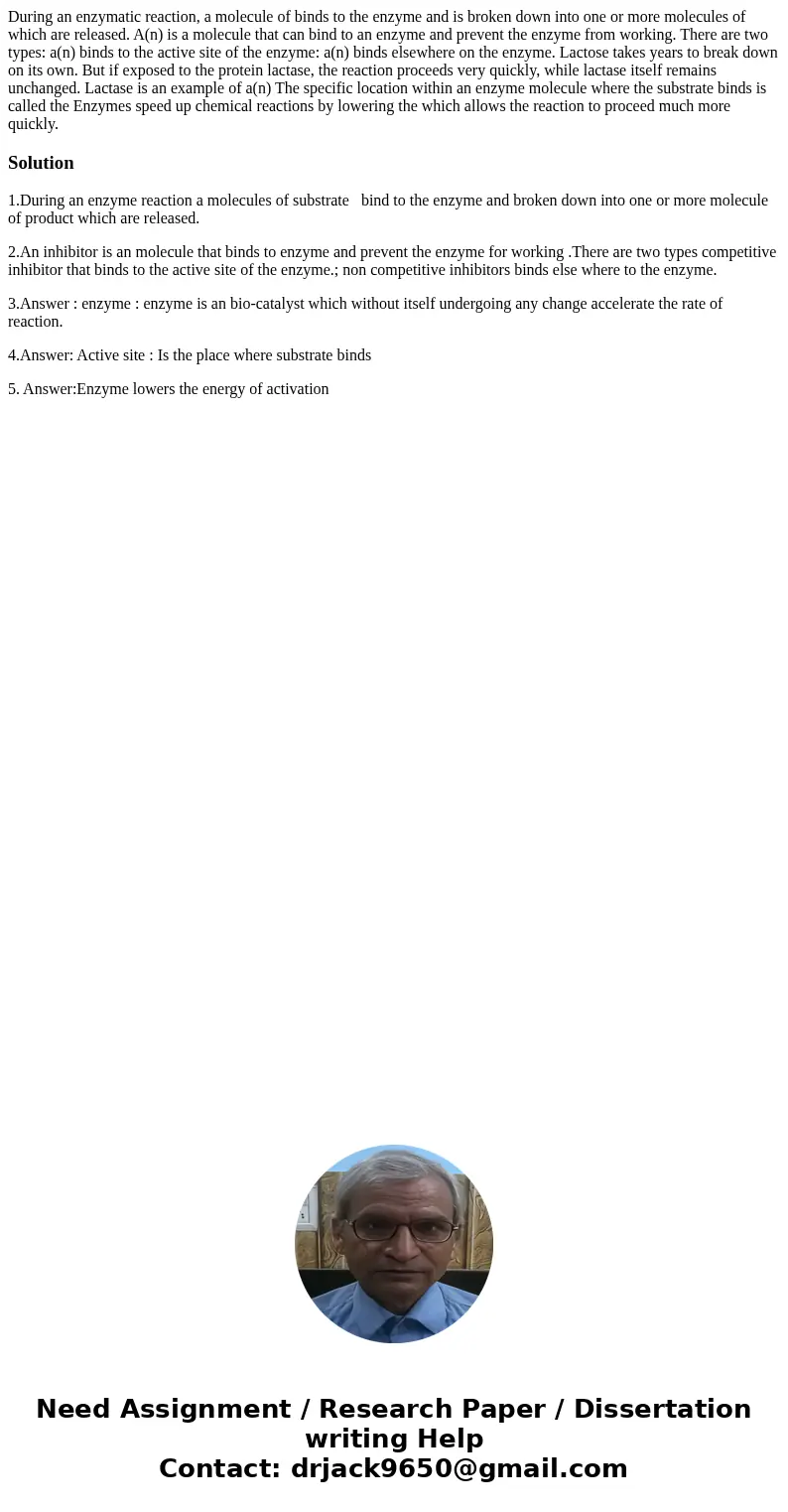During an enzymatic reaction a molecule of binds to the enzy
During an enzymatic reaction, a molecule of binds to the enzyme and is broken down into one or more molecules of which are released. A(n) is a molecule that can bind to an enzyme and prevent the enzyme from working. There are two types: a(n) binds to the active site of the enzyme: a(n) binds elsewhere on the enzyme. Lactose takes years to break down on its own. But if exposed to the protein lactase, the reaction proceeds very quickly, while lactase itself remains unchanged. Lactase is an example of a(n) The specific location within an enzyme molecule where the substrate binds is called the Enzymes speed up chemical reactions by lowering the which allows the reaction to proceed much more quickly.
Solution
1.During an enzyme reaction a molecules of substrate bind to the enzyme and broken down into one or more molecule of product which are released.
2.An inhibitor is an molecule that binds to enzyme and prevent the enzyme for working .There are two types competitive inhibitor that binds to the active site of the enzyme.; non competitive inhibitors binds else where to the enzyme.
3.Answer : enzyme : enzyme is an bio-catalyst which without itself undergoing any change accelerate the rate of reaction.
4.Answer: Active site : Is the place where substrate binds
5. Answer:Enzyme lowers the energy of activation

 Homework Sourse
Homework Sourse